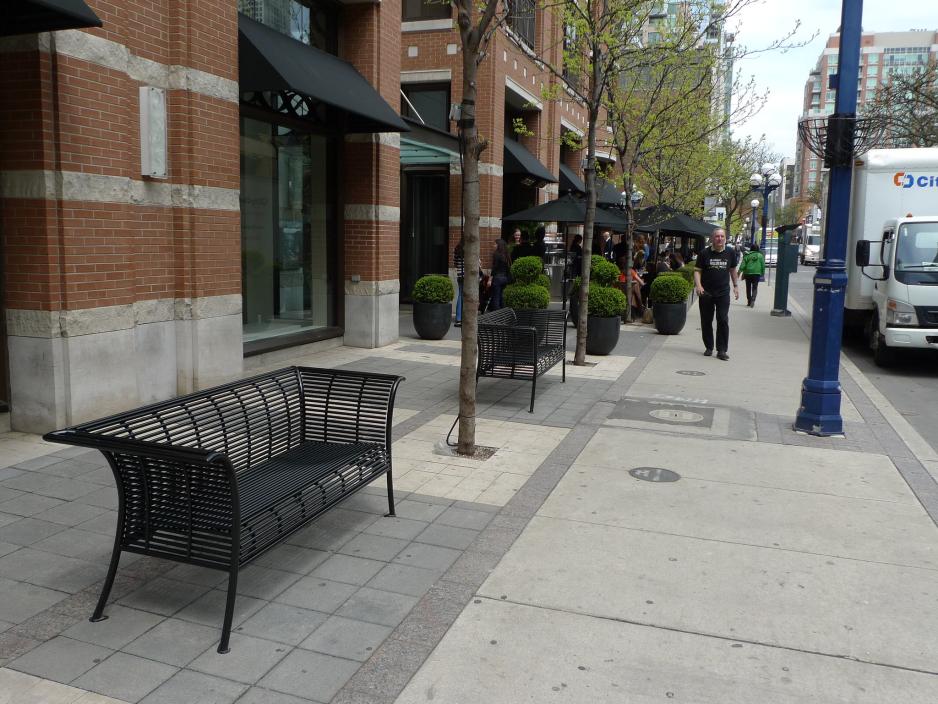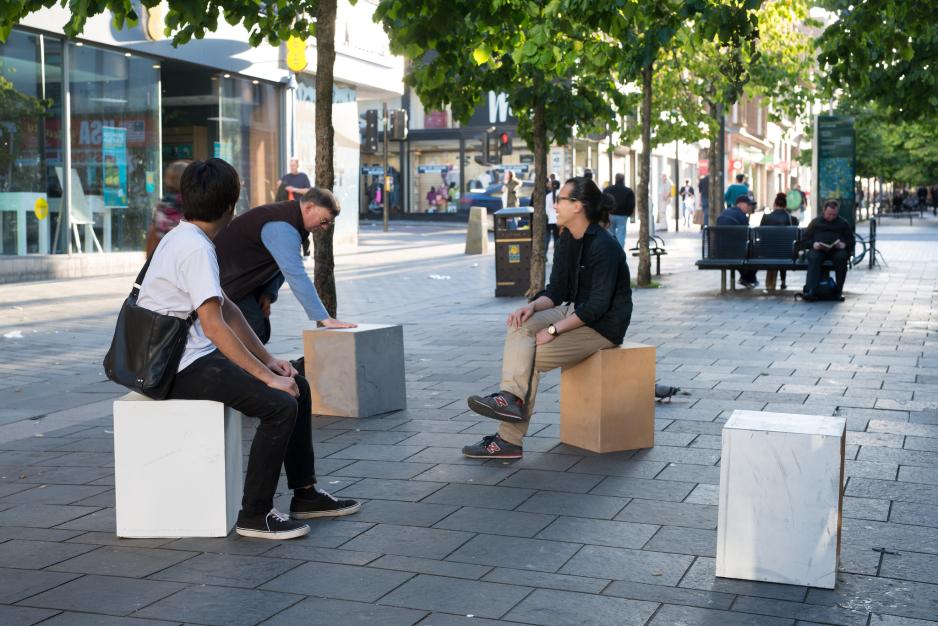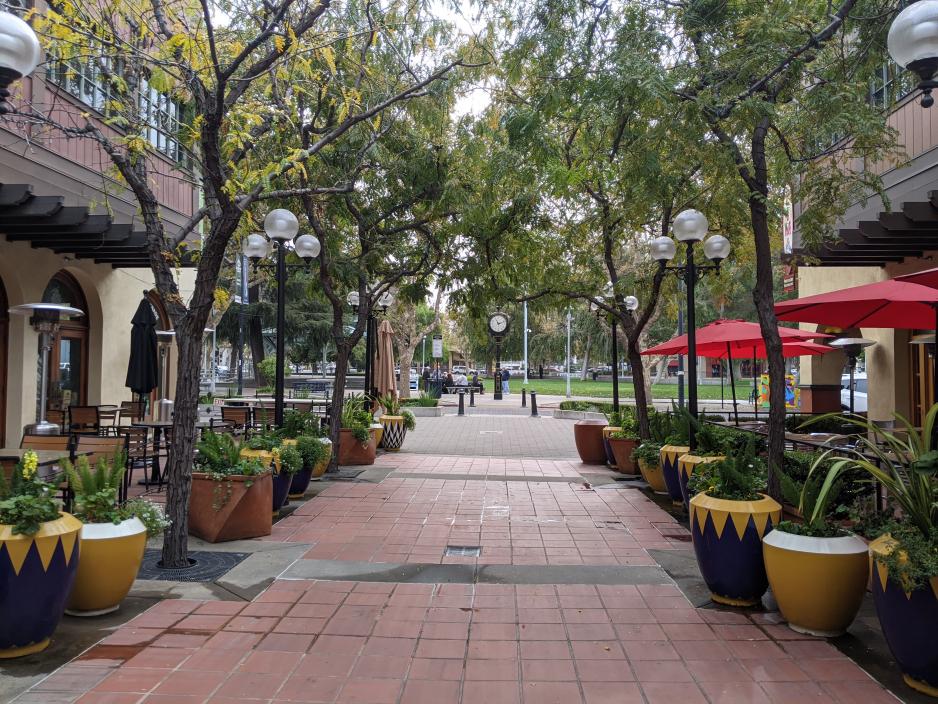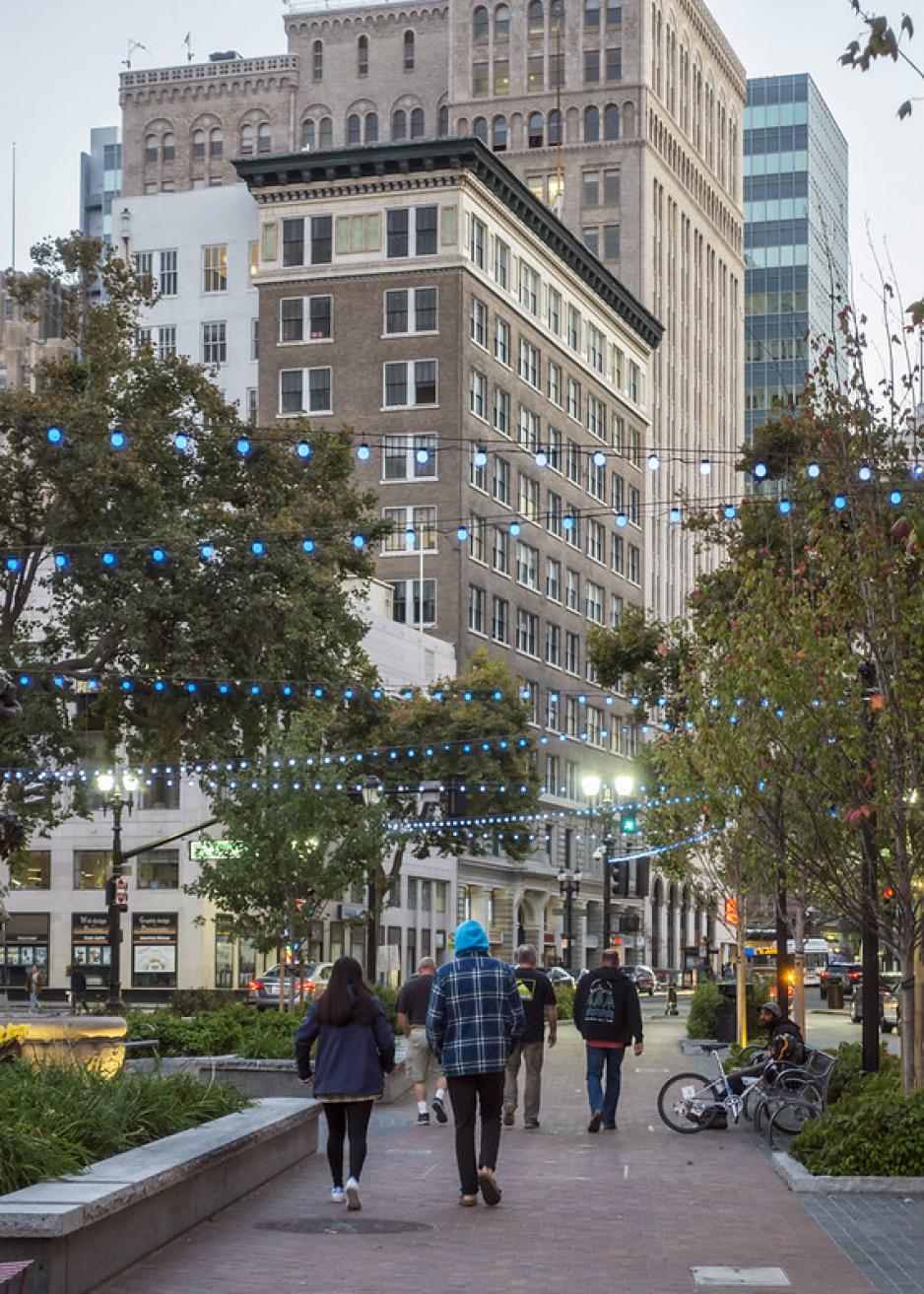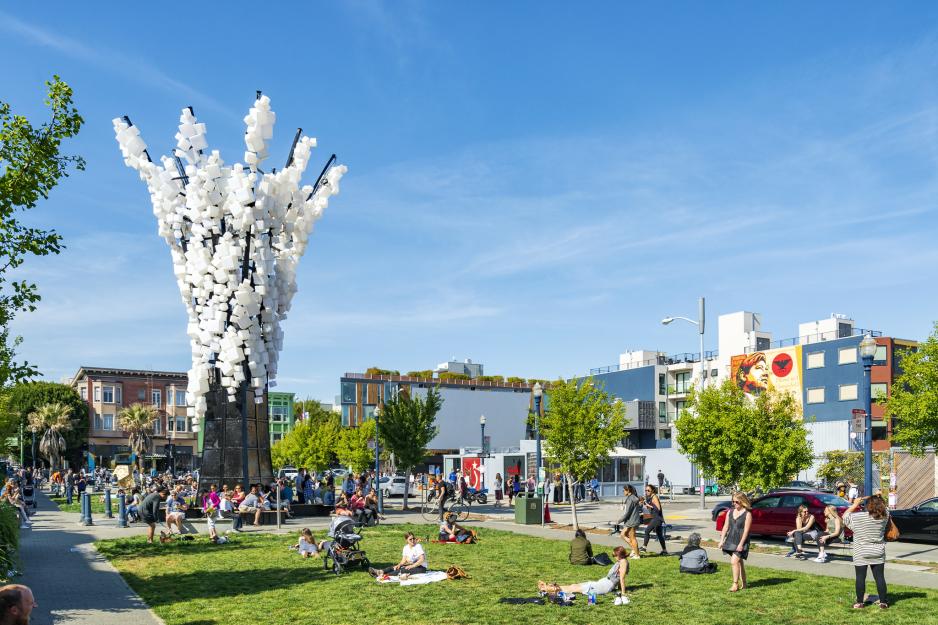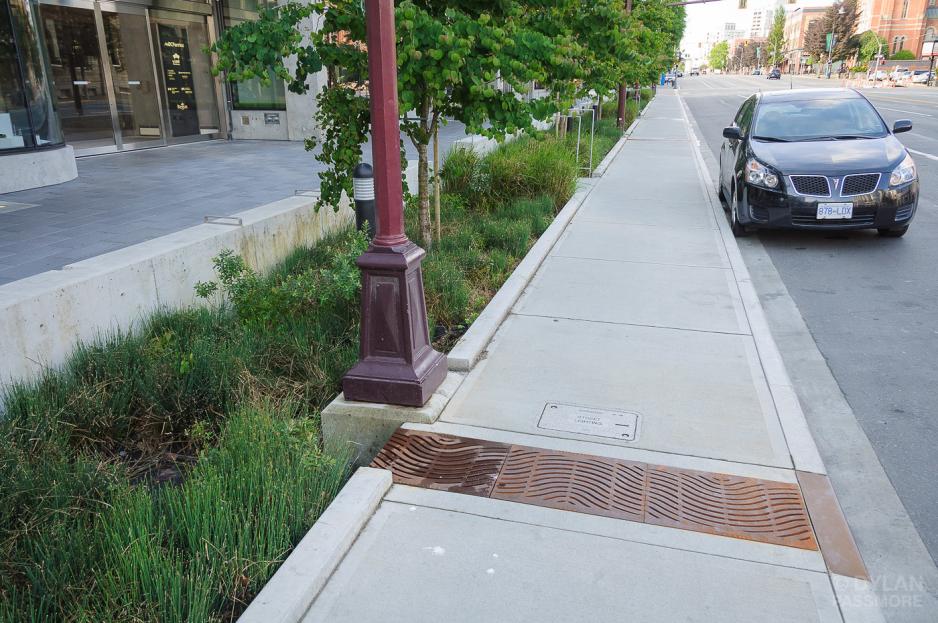Create urban environments that support health and wellness in neighborhoods near transit.
Create compact connected neighborhoods.
- Create intimate areas with a high degree of enclosure and continuous building frontage. Enclosures should provide a separation between public and private space while still encouraging natural surveillance.
- Ensure four-season design to encourage active transportation and recreational activities throughout the year.
- Create a permeable network of streets to provide choice to pedestrians in reaching their destination.
- Provide places for pedestrians to rest and potentially engage in spontaneous socialization.
- Involve public health teams in the design review process.
Provide safe, direct and interesting routes to transit. A transit rider’s commute is often part of their daily physical activity. Employ Crime Prevention Through Environmental Design (CPTED) principles when designing routes to transit.
- Provide equal emphasis on pedestrian and cycling when considering commuting routes.
Design open and public spaces that are multi-functional and support active and passive recreation, relaxation, and community building.
Design all public spaces to Universal Design standards to create environments that do not draw attention to any specific accessibility features but rather benefit the community holistically.
Include green infrastructure in community design to improve air and water quality, buffer noise, create habitat and provide an opportunity for human interaction with nature in urban environments.
- Provide trees, shrubs, grasses and other landscape plantings to define the character of the street, provide shade and cooling, capture carbon, and absorb and clean stormwater. Landscape plantings also have the ability to contribute significantly to larger natural ecological systems, such as migratory routes when connected to other green spaces.
- Ensure green infrastructure and landscaping are an asset rather than a detriment by providing clear sight lights, ensuring they are well maintained and remain attractive and are free from obstacles to pedestrians and cyclists. Well maintained landscapes have proven psychological and social benefits.
- Provide adequate space for landscape plantings to grow and thrive. Apply technology to address the typical urban issues of soil compaction, rooting space, and adequate water. Technology may be used to provide plantings optimal growing conditions while creating or maintaining safe and comfortable pedestrian environments. Consider implementing soil cells and curb outlets to support streetscape planting in tree pits, trenches and raised beds, bioswales or stormwater planters, or rain gardens.
